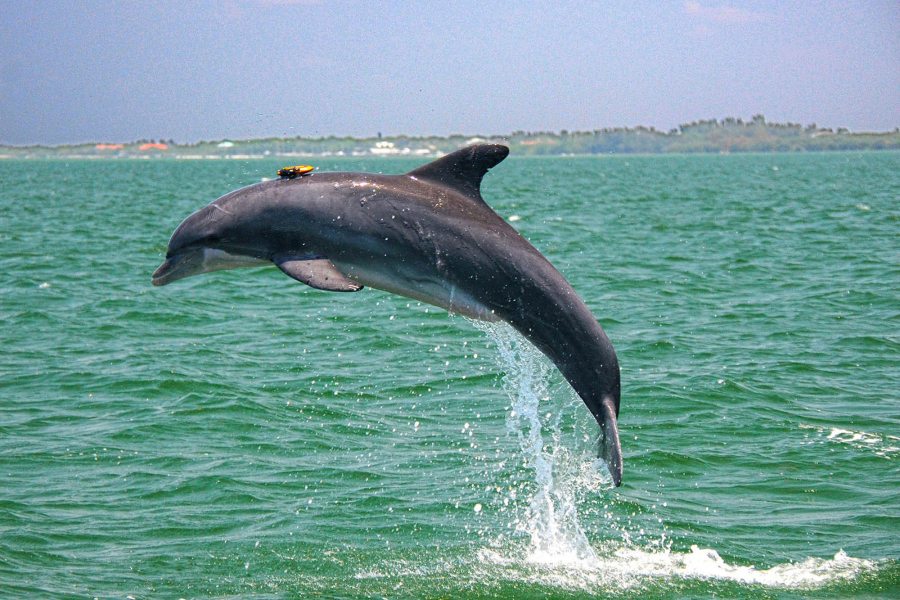CHICAGO – Beginning his work in marine biology, Randy Wells thought he was a shark guy.
But the teenager whose family had just moved from Peoria to Florida’s Gulf Coast volunteered to help a local researcher study the migration patterns of the bottlenose dolphins off of Sarasota.
And now it’s 50 years later and Wells — a staff scientist at Brookfield Zoo in suburban Chicago since 1989 — heads the world’s longest running study of a marine mammal population in the wild, tracking the lives, loves and losses of some 170 Sarasota Bay dolphins and delivering globally significant insight into creatures that have long fascinated humans.
In the process Wells has become one of the best-known dolphin guys on the planet — and helped make Brookfield more than just a landlocked zoo in a sleepy western suburb.
But the essence of what he has learned, Wells says, is not that different from life in a Chicago ‘burb. He explained:
“So when we started, we had no idea what we were going to find back in 1970. It was completely exploratory, with a pilot tagging study back then, and it could have gone a variety of directions. But the idea that we could find the same identifiable individual dolphins time and time again within a fairly limited area set the stage for everything we’ve been able to do since then.
“So we can recognize 95 percent of the dolphins in Sarasota waters just from looking at their dorsal fin, looking for patterns of nicks and notches on their fins. Within that 170-dolphin community, we have been monitoring them through six generations. At any given time, we can have up to five concurrent generations within a lineage.
“So it’s very much like a suburban neighborhood outside of Chicago. For example, I lived in LaGrange Park for a few years and in the neighborhood that I lived in, there were multiple generations of the same family on back-to-back streets. And that’s kind of how I envision what’s going on in Sarasota.”
That explanation is true enough, but it doesn’t capture the breadth of work that Wells and scores of colleagues and visiting scientists have been able to do over the years from their headquarters on Sarasota Bay.
After first establishing the crucial fact that the wild dolphin population was resident, rather than transitory, Wells and what is now called the Sarasota Dolphin Research Program have helped prove the damage to dolphins and the Gulf of Mexico ecosystem caused by the Deepwater Horizon oil spill, spotlighted the impact of red tide events, pioneered techniques in health assessment of dolphins and established that dolphins can live to age 67 and give birth up to age 48.
“Scotchgard, which we used to put on couches?” said Stuart Strahl, president and CEO of Chicago Zoological Society, the parent organization of Brookfield Zoo. “One of the reasons that’s off the shelves now, it’s a bioaccumulator like DDT.” The original formulation of the 3M product, “that’s off the shelves because of Randy’s research, because of what he found in the dolphins.”
The list of SDRP impacts Brookfield has compiled to mark the 50th anniversary, which happened officially in October, is remarkable for their length and detail, but it would be wrong to think of the program as all white lab coats and clipboards.
“Randy and his crew, they’re the most prolific scientists I’ve ever met,” said Strahl, who has a research background himself. “They are some of the most remarkable humans I’ve seen in the field, and the enthusiasm they have when they see a dolphin they haven’t seen in a while is terrific. ‘That must be so and so!’ It’s infectious when you’re around them.”
And the reason for Brookfeild to continue supporting the program — to the tune of almost $1 million annually, primarily through grants and philanthropy, the zoo says — is because it complements the work done on the zoo campus.
“We have an obligation to engage people in not just the animals that we have on display but also to learn their stories and learn the stories of what things they face in the wild and how those issues can be mitigated,” said Strahl. “It’s two halves of a solution for wildlife.”



